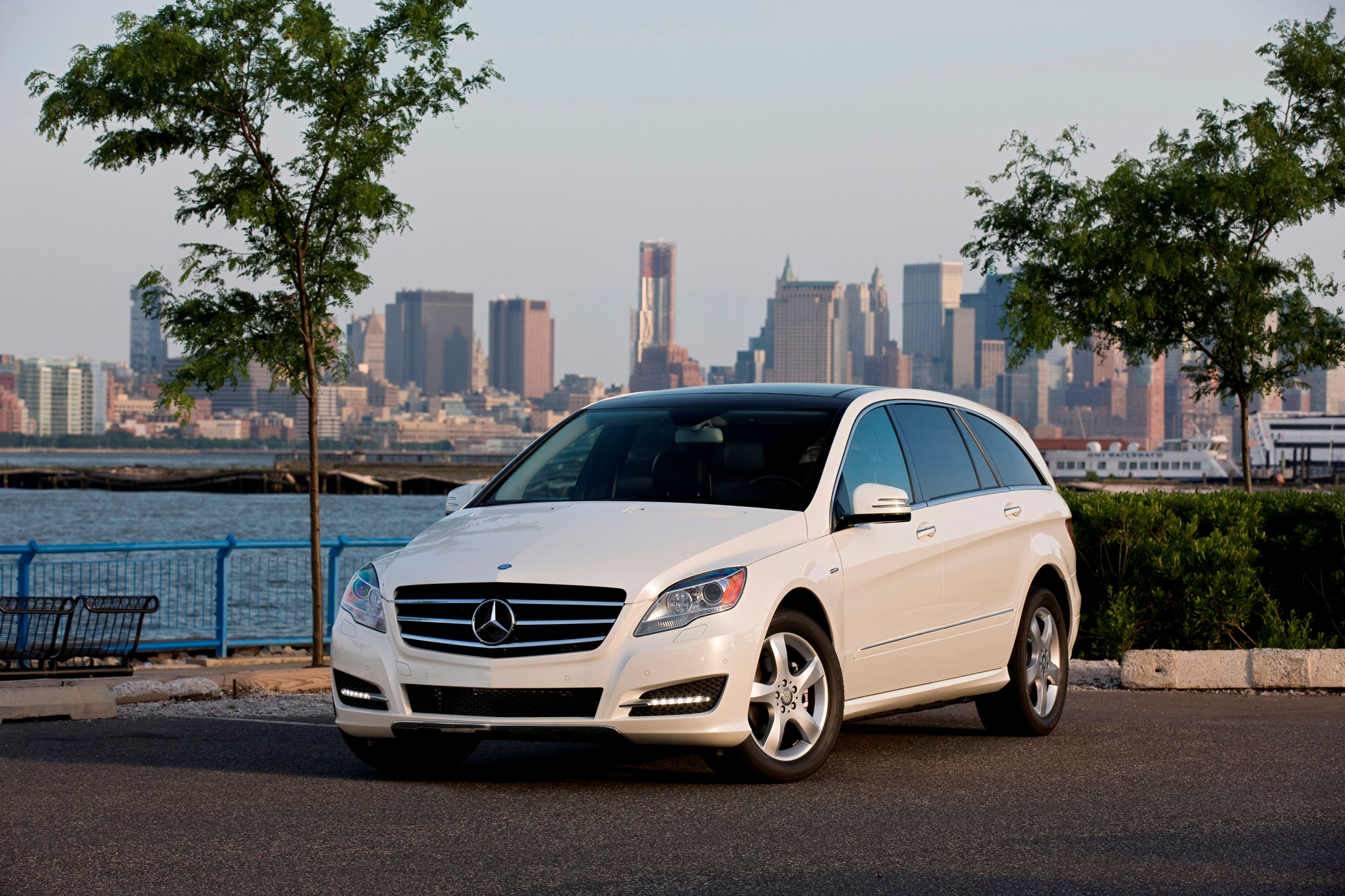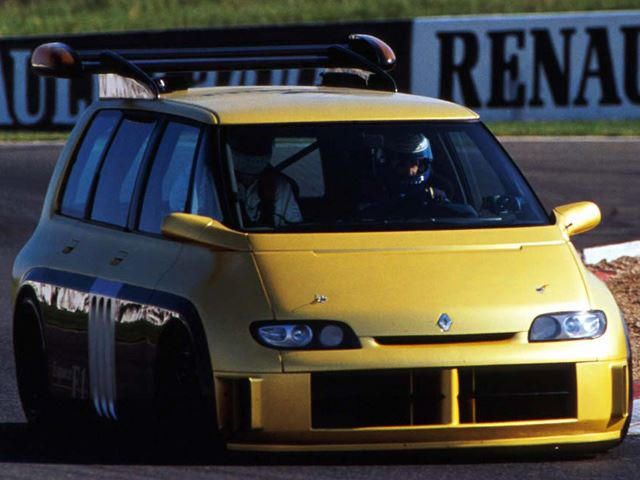
Minivans and performance are about as far away from each other on the automotive spectrum as can be. Minivans are utilitarian boxes with less-than-optimal body rigidity, the aerodynamic profile of a barn and a higher center of gravity than a fat man on stilts. In other words, not the best starting point for a high-performance vehicle. But that hasn't stopped some automakers from trying. Some of these were concepts, some made production, and one was only for racing. But they were all awesome.
In 1995, Renault took the wraps off the Espace F1 concept. While it may have shared its overall shape with the production Espace, underneath it shared more in common with the Benetton-Renault which Michael Schumacher drove to his first world championship that same year. That included the carbon-fiber chassis and the 3.5-liter V10 that was mounted in the middle, kicking out 800 horsepower to the rear wheels through a competition-spec six-speed sequential gearbox. As a result, this minivan could run from 0 to 62 mph in 2.8 seconds and top out at 194 mph.
Arguably just as bonkers as the Renault Espace F1 concept is what Bertone dreamt up for the 1988 Turin Auto Show. The Genesis minivan concept shared its 455-horsepower V12 with the Lamborghini Countach, not to mention the LM002 that had just finished its production run when the Genesis concept hit. While Lambos may be known for their scissor doors, the Genesis (no relation, of course, to the Hyundai that would follow decades later) had gullwing doors at the front and sliding doors at the back. The shape represented the height of the jellybean design movement, but it was never intended for production.
The letters SHO are well known to Ford enthusiasts as belonging to the performance version of the Taurus, but in 1995 Ford rolled in to the Detroit show with the SHOstar concept. Ford started with the Windstar minivan and gave it a subtle but sportier body kit, new rolling stock, a bright yellow paint job and – most importantly – the engine from the Taurus SHO. Of course that sport sedan only had a 220-horsepower 3.0-liter V6 back then - a far cry from the 365 horses under the hood of the latest Taurus SHO – but that was still a lot for the 90s, and we applaud the effort. Shame it was never offered for sale.
The Dacia Lodgy may be about as bare-bones as you can get with a European MPV, but the Lodgy Glace was another matter entirely. In order to promote the new minivan, Dacia entered this racing version in the Andros Trophy, a French ice racing series. Instead of the 85-horsepower base engine or even the 115hp turbo offered in the production model, Renault's Romanian subsidiary slotted in a 3.0-liter V6 with 355 horsepower. Four-time F1 champ Alain Prost drove it to his third championship trophy in 2012, before handing it off to fellow former F1 driver Olivier Panis for this season.
This last example is the only one here that was actually offered for sale. Although Mercedes may have called it a "sports cruiser" or "family tourer", the R-Class was really just a minivan at heart - even if its giant rear doors opened outwards instead of sliding back. And yes, there was an AMG version. The R63 packed the same 500-horsepower 6.2-liter V8 as many other AMGs, sending the luxury van up to 62 in 4.9 seconds and on to an electronically-limited top speed of 155 mph. With a $90k price tag, Mercedes sold very few R63 AMGs, and took it off the market after only one year. But you could probably find a used one for half that.
Check out the most reliable minivan.

